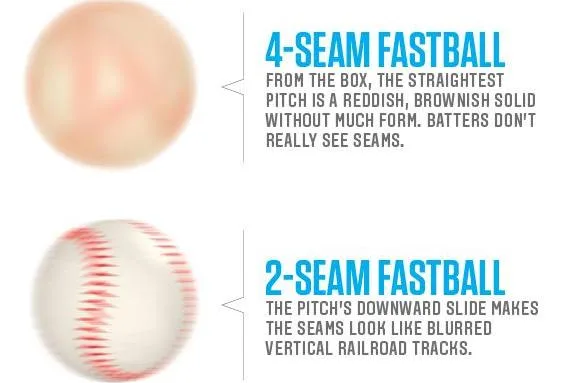 How Do You Throw a Fastball is one of the foundational skills in baseball, setting the stage for a pitcher’s success. Whether you’re aiming to blow hitters away with velocity or control your pitches with pinpoint accuracy, mastering the fastball is essential. This guide provides a comprehensive breakdown of everything you need to know about throwing a fastball, from the basics of grip to advanced techniques for improving velocity.
How Do You Throw a Fastball is one of the foundational skills in baseball, setting the stage for a pitcher’s success. Whether you’re aiming to blow hitters away with velocity or control your pitches with pinpoint accuracy, mastering the fastball is essential. This guide provides a comprehensive breakdown of everything you need to know about throwing a fastball, from the basics of grip to advanced techniques for improving velocity.
In the world of baseball, the fastball is often considered the benchmark of a pitcher’s ability. It’s more than just speed; the fastball is a test of mechanics, timing, and mental toughness. For aspiring pitchers, developing a reliable fastball is the gateway to building a complete pitching repertoire. At higher levels of competition, the ability to command different types of fastballs — from the four-seamer to the sinker — can be the difference between dominance on the mound or struggling to keep hitters at bay. This article is designed to help you not only throw a fastball but to understand the intricacies of each pitch type and when to use them effectively.
Moreover, the fastball serves as the foundation upon which other pitches are built. The principles you master in throwing a fastball — grip, body mechanics, and release point — translate directly into improving off-speed and breaking pitches. Whether you’re a beginner just learning the fundamentals or a seasoned pitcher looking to refine your technique, this comprehensive guide will walk you through every aspect of throwing a fastball, from understanding the science behind velocity to correcting common mistakes. By the end, you’ll be equipped with the knowledge and strategies needed to elevate your pitching game to the next level.
What is a Fastball? How Do You Throw a Fastball?
Definition and Types of Fastballs
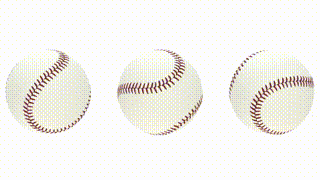
4 Seam, 2 Seam, Cutter Fastball
A fastball is one of the most fundamental pitches in baseball, known for its combination of speed, precision, and relative simplicity. It is generally thrown with maximum velocity and minimal movement, allowing the pitcher to challenge hitters with sheer speed. However, there’s more to a fastball than just throwing hard. Several variations exist, each with unique characteristics that can make them more effective in different situations. The four-seam fastball, for instance, is the most common and offers the highest velocity with a straight, rising trajectory that makes it harder for batters to time. The two-seam fastball, also known as a sinker, generates more horizontal and downward movement, making it effective for inducing ground balls.
Then there’s the cutter, a pitch that looks like a four-seam fastball but subtly veers to the glove side as it approaches the plate. This late break can miss bats or shatter the bat’s handle, leading to weak contact. The sinker, a close relative of the two-seamer, is designed to dip significantly as it nears the plate, keeping hitters off-balance. Each variation has its place in a pitcher’s arsenal, and understanding the nuances of these fastballs allows for better pitch sequencing and strategic planning.
Why the Fastball is Essential in Baseball: How Do You Throw a Fastball?
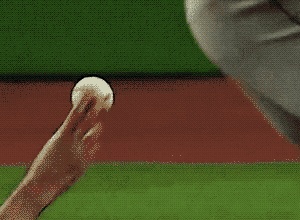
Fastball stays up, Curveball moves down, and Slider runs into hitter.
The fastball is the cornerstone of every pitcher’s game plan. It sets the tone for everything that follows, providing a basis for how a pitcher controls the tempo of the game. In most cases, the fastball is the first pitch a pitcher will throw in an at-bat, helping them establish dominance early in the count. When a pitcher can reliably throw strikes with their fastball, they gain a significant advantage, forcing hitters to respect the pitch and making them more susceptible to off-speed offerings like breaking balls and changeups.
In addition to its role in setting up other pitches, the fastball’s effectiveness lies in its ability to be thrown with different levels of intensity. A well-commanded fastball can be used to challenge hitters, expand the strike zone, or induce weak contact depending on the situation. Whether aiming for the corners of the plate or elevating the pitch to induce a swing-and-miss, mastering the fastball is crucial for maintaining a competitive edge in any pitching scenario. This is why learning to control and manipulate a fastball remains the first priority for developing pitchers and continues to be a focal point even at the professional level.
The Fundamentals of How Do You Throw a Fastball?
Proper Gripping Techniques
 The grip is one of the most critical elements in throwing an effective fastball. A proper grip directly influences the pitch’s velocity, accuracy, and movement. The most common fastball grip is the four-seam grip. To achieve this, place your index and middle fingers across the seams, so that they run perpendicular to the stitches. This allows the ball to spin cleanly with backspin, resulting in a straight, rising trajectory that’s harder for hitters to track. Your thumb should rest directly underneath the ball, providing balance and support. The positioning of your fingers and the even distribution of pressure across them is what creates the consistent, high-velocity spin needed for an effective fastball.
The grip is one of the most critical elements in throwing an effective fastball. A proper grip directly influences the pitch’s velocity, accuracy, and movement. The most common fastball grip is the four-seam grip. To achieve this, place your index and middle fingers across the seams, so that they run perpendicular to the stitches. This allows the ball to spin cleanly with backspin, resulting in a straight, rising trajectory that’s harder for hitters to track. Your thumb should rest directly underneath the ball, providing balance and support. The positioning of your fingers and the even distribution of pressure across them is what creates the consistent, high-velocity spin needed for an effective fastball.
While the four-seam grip is standard, slight adjustments in finger placement can be made depending on your comfort level and desired pitch characteristics. For instance, spreading your fingers slightly wider can give you more control, while tightening them together can help with additional velocity. Consistency in your grip is key, as even minor changes can lead to different results in movement, accuracy, and speed.
Finger Placement and Pressure
Beyond simply holding the ball, how you position your fingers and the pressure you apply play pivotal roles in determining the outcome of your fastball. Ideally, you want to apply even pressure with your index and middle fingers, while your thumb provides gentle support underneath. Gripping the ball too tightly can restrict the natural spin and fluidity of the pitch, leading to reduced velocity and potential control issues. On the other hand, a grip that is too loose might cause the ball to slip, making it difficult to command.
The relationship between finger pressure and release is crucial. As the ball leaves your hand, the last contact points should be your fingertips, ensuring a clean, consistent backspin. Consistent finger placement and pressure ensure that each fastball behaves predictably, allowing you to focus on fine-tuning your mechanics without worrying about grip variability. Practicing your grip until it becomes second nature is essential for developing repeatable mechanics that lead to consistent performance.
The Kinetic Chain and Biomechanics
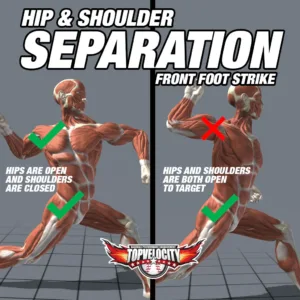 Efficient use of the kinetic chain is fundamental to maximizing fastball velocity while minimizing the risk of injury. The kinetic chain refers to how energy is transferred through your body, starting from your legs, through your core, and ultimately into your throwing arm. When done correctly, this chain of motion allows you to generate significant force without over-relying on any single part of your body, which is crucial for long-term health and effectiveness as a pitcher.
Efficient use of the kinetic chain is fundamental to maximizing fastball velocity while minimizing the risk of injury. The kinetic chain refers to how energy is transferred through your body, starting from your legs, through your core, and ultimately into your throwing arm. When done correctly, this chain of motion allows you to generate significant force without over-relying on any single part of your body, which is crucial for long-term health and effectiveness as a pitcher.
To properly engage the kinetic chain, your lower body must initiate the movement with a powerful push-off from the rubber, leading to a strong stride. As your front foot lands, your hips should rotate explosively while your torso remains closed, creating torque. This rotational energy is transferred to your arm as it comes forward. Maintaining good posture and alignment during this phase ensures that the energy is efficiently directed into the baseball rather than being wasted in inefficient movements.
Biomechanics also play a vital role in the efficiency of your delivery. A consistent release point is crucial for both velocity and control. By focusing on repeatable mechanics, such as maintaining an elbow height at shoulder level and a stable head position, you can achieve greater accuracy and avoid placing undue stress on your arm. Pitchers who master these elements of the kinetic chain and biomechanics can throw fastballs with more power, consistency, and lower injury risk, making them more effective on the mound over the long term.
The Science Behind How Do You Throw a Fastball?
Understanding Pitching Velocity
 Pitching velocity is one of the most talked-about metrics in baseball, and for good reason—it’s a key factor that can separate an average pitcher from an elite one. Velocity is not just about raw arm strength; it’s the product of a complex interplay between strength, mechanics, technique, and timing. To throw a fastball at high speeds, a pitcher needs to generate explosive force from the ground up, channeling that energy through the legs, core, and into the arm. This begins with a powerful push-off from the rubber, followed by an efficient transfer of energy through the kinetic chain, all while maintaining proper posture and balance.
Pitching velocity is one of the most talked-about metrics in baseball, and for good reason—it’s a key factor that can separate an average pitcher from an elite one. Velocity is not just about raw arm strength; it’s the product of a complex interplay between strength, mechanics, technique, and timing. To throw a fastball at high speeds, a pitcher needs to generate explosive force from the ground up, channeling that energy through the legs, core, and into the arm. This begins with a powerful push-off from the rubber, followed by an efficient transfer of energy through the kinetic chain, all while maintaining proper posture and balance.
Strength training, particularly focusing on lower body power and core stability, plays a significant role in increasing velocity. Exercises that target explosive movements, like plyometrics and Olympic lifts, help build the fast-twitch muscle fibers needed for maximum acceleration. However, strength alone is not enough. Pitching mechanics and technique determine how effectively that strength is converted into velocity. Poor mechanics, such as a late arm action or an inefficient stride, can leak energy and reduce the speed of your fastball. That’s why it’s crucial to combine strength training with refined mechanics and drills that promote smooth, repeatable movements.
How Spin Rate Affects a Fastball
 Spin rate is a critical component that influences how effective a fastball is, particularly in how it moves and how hitters perceive it. Spin rate refers to the number of revolutions the baseball makes per minute (RPM) as it travels towards the plate. A higher spin rate generally results in less vertical drop, which gives the illusion of a “rising” fastball. While the ball doesn’t actually rise, the reduced drop makes it appear to defy gravity compared to a lower spin-rate pitch. This can make high-spin fastballs more difficult for hitters to square up, especially when thrown up in the strike zone.
Spin rate is a critical component that influences how effective a fastball is, particularly in how it moves and how hitters perceive it. Spin rate refers to the number of revolutions the baseball makes per minute (RPM) as it travels towards the plate. A higher spin rate generally results in less vertical drop, which gives the illusion of a “rising” fastball. While the ball doesn’t actually rise, the reduced drop makes it appear to defy gravity compared to a lower spin-rate pitch. This can make high-spin fastballs more difficult for hitters to square up, especially when thrown up in the strike zone.
The relationship between spin rate and pitch movement is rooted in physics. The Magnus effect explains how the backspin generated by a fastball creates lift, counteracting gravity and reducing the ball’s downward trajectory. Pitchers with high spin rates can exploit this by throwing fastballs that stay on a flat plane longer, making it harder for batters to adjust their swings. Achieving a high spin rate isn’t purely about grip or how tightly you hold the ball; it also depends on how efficiently you generate backspin through finger pressure and wrist action at release. Advanced tools like Rapsodo and TrackMan allow pitchers to measure and optimize their spin rates, providing valuable data that can be used to fine-tune their fastball for maximum effectiveness.
The Role of Biomechanics in Fastball Efficiency
 Biomechanics is the study of the body’s movements and how they can be optimized for efficiency and performance. In the context of pitching, biomechanics is crucial for maximizing fastball velocity while minimizing injury risk. Efficient biomechanics involve creating smooth, coordinated movements that generate power without placing undue stress on the joints and muscles. Key elements include proper posture, rotational sequencing, and timing. For instance, timing the rotation of the hips and torso correctly during the pitching motion allows a pitcher to generate more torque, which translates into higher velocity.
Biomechanics is the study of the body’s movements and how they can be optimized for efficiency and performance. In the context of pitching, biomechanics is crucial for maximizing fastball velocity while minimizing injury risk. Efficient biomechanics involve creating smooth, coordinated movements that generate power without placing undue stress on the joints and muscles. Key elements include proper posture, rotational sequencing, and timing. For instance, timing the rotation of the hips and torso correctly during the pitching motion allows a pitcher to generate more torque, which translates into higher velocity.
Biomechanical analysis can identify inefficiencies in a pitcher’s delivery, such as a weak stride, early shoulder rotation, or poor arm positioning, all of which can sap velocity or lead to injury. Modern training methods often include motion capture and video analysis to break down a pitcher’s mechanics frame by frame. This data-driven approach allows coaches and athletes to pinpoint areas for improvement and develop targeted drills that reinforce efficient movements. By honing biomechanics, pitchers can throw harder while maintaining consistent control, leading to a more reliable and effective fastball. Additionally, optimizing biomechanics helps prevent overuse injuries, enabling pitchers to sustain high performance over longer seasons and careers.
Different Types of Fastballs and When to Use Them
The Four-Seam Fastball: How Do You Throw a Fastball?
The four-seam fastball is the foundational pitch for most pitchers and is often their go-to in high-pressure situations. It’s called a “four-seam” because, when thrown correctly, the seams rotate four times as the ball travels from the pitcher to the plate. This pitch offers the highest velocity of all fastball types, making it a key weapon for pitchers looking to overpower hitters. Due to its backspin, the four-seam fastball typically has minimal horizontal or vertical movement, allowing it to stay straighter compared to other pitches. This straight-line trajectory is ideal for throwing strikes and challenging hitters in the strike zone. Pitchers often use the four-seam fastball to get ahead in the count or when they need a reliable pitch for critical situations.
The Two-Seam Fastball: How Do You Throw a Fastball?
The two-seam fastball, also commonly referred to as a sinker, is a pitch that combines velocity with movement. Unlike the four-seam fastball, the grip for a two-seamer involves placing the index and middle fingers along the seams, resulting in less backspin and more side spin. The result is a pitch that tends to run toward the pitcher’s throwing hand side while also dipping downward. This arm-side run and sink make the two-seam fastball particularly effective for inducing ground balls, as hitters often struggle to square up the ball. Pitchers use the two-seamer in situations where they need to generate weak contact or when facing hitters who struggle with pitches that move in on them. It’s especially useful when trying to jam right-handed hitters if you’re a right-handed pitcher, or left-handed hitters if you’re a lefty.
The Cutter
 The cutter, or cut fastball, is a pitch that bridges the gap between a four-seam fastball and a slider. The grip for a cutter is similar to a four-seam grip but with a slight shift in finger positioning toward the outside of the ball. This subtle adjustment causes the ball to break slightly to the glove side as it approaches the plate. While the cutter is thrown with near-fastball velocity, the late movement makes it difficult for hitters to barrel the ball, often resulting in weak contact or broken bats. Pitchers like Mariano Rivera built their careers around this pitch, using it to dominate hitters and induce soft contact. The cutter is most effective when thrown inside to hitters, forcing them to adjust their swings at the last moment.
The cutter, or cut fastball, is a pitch that bridges the gap between a four-seam fastball and a slider. The grip for a cutter is similar to a four-seam grip but with a slight shift in finger positioning toward the outside of the ball. This subtle adjustment causes the ball to break slightly to the glove side as it approaches the plate. While the cutter is thrown with near-fastball velocity, the late movement makes it difficult for hitters to barrel the ball, often resulting in weak contact or broken bats. Pitchers like Mariano Rivera built their careers around this pitch, using it to dominate hitters and induce soft contact. The cutter is most effective when thrown inside to hitters, forcing them to adjust their swings at the last moment.
The Sinker
The sinker is a variation of the two-seam fastball, designed to drop sharply as it reaches the plate. While it shares the arm-side run of a traditional two-seamer, the sinker is thrown with a grip and release that accentuates downward movement. This pitch is especially effective for inducing ground balls, making it a popular choice for pitchers who rely on weak contact to get outs. The sinker is most effective when thrown low in the strike zone, tempting hitters to swing over the top of the ball and roll it over to the infield. In addition to generating ground balls, the sinker can be used to change a hitter’s eye level, setting up other pitches that stay higher in the zone.
Situational Use of Different Fastballs
Each type of fastball serves a unique strategic purpose, and knowing when to use each one is vital for outsmarting hitters. The four-seam fastball is often thrown when a pitcher needs a strike or wants to overpower a hitter with sheer velocity. In contrast, the two-seam fastball or sinker is used when inducing a ground ball is the priority, especially in double-play situations. The cutter, with its late break, is an excellent pitch for jamming hitters or setting up a breaking ball by keeping them off balance. Effective pitchers vary their fastballs based on the count, the batter’s tendencies, and the game situation, ensuring they stay unpredictable and maintain an edge over opposing hitters.
The 3X Pitching Velocity Program: How Do You Throw a Fastball?
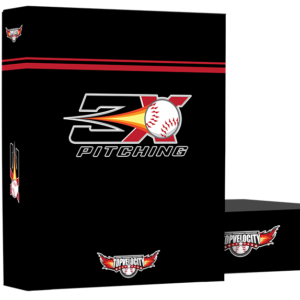 The 3X Pitching Velocity Program, offered by TopVelocity.net, is a comprehensive training system designed specifically to help pitchers develop elite fastball velocity while maintaining healthy mechanics. Unlike traditional pitching programs that focus solely on throwing more often, the 3X program emphasizes a science-backed approach that integrates strength, biomechanics, and explosive power training. This program has gained recognition for helping pitchers of all levels—from youth to professional—achieve significant velocity gains while reducing the risk of injury.
The 3X Pitching Velocity Program, offered by TopVelocity.net, is a comprehensive training system designed specifically to help pitchers develop elite fastball velocity while maintaining healthy mechanics. Unlike traditional pitching programs that focus solely on throwing more often, the 3X program emphasizes a science-backed approach that integrates strength, biomechanics, and explosive power training. This program has gained recognition for helping pitchers of all levels—from youth to professional—achieve significant velocity gains while reducing the risk of injury.
Key Components of the 3X Pitching Velocity Program
- The 3X Mechanics: Central to the 3X program is a focus on what’s known as the “Triple Extension” (3X) mechanics. Triple Extension involves the simultaneous extension of the ankle, knee, and hip joints during the stride phase of the pitching motion. This movement pattern is crucial for generating maximum ground force, which translates into higher velocity when transferred through the kinetic chain. The program trains pitchers to optimize these mechanics, ensuring that energy is efficiently directed from the legs and core into the arm.
- Strength and Power Development: The 3X program incorporates an extensive strength and conditioning component designed to build explosive power. Exercises focus on developing fast-twitch muscle fibers, which are essential for generating the speed and force needed for elite-level fastballs. The program includes Olympic lifts, plyometrics, and functional strength exercises that target the specific muscle groups involved in pitching. By building a strong, explosive lower body and core, pitchers can maximize their velocity potential.
- Biomechanics Optimization: A major emphasis of the 3X Pitching Velocity Program is optimizing a pitcher’s biomechanics. Through video analysis and targeted drills, pitchers learn how to refine their delivery to be more efficient and effective. This reduces energy leaks in the kinetic chain, allowing pitchers to throw harder with less effort and less strain on the arm. The program’s biomechanical focus also helps pitchers achieve a consistent release point, improving both velocity and control.
- Mobility and Stability Training: Flexibility and mobility are often overlooked aspects of pitching velocity. The 3X program addresses this by incorporating mobility drills that enhance the range of motion in key joints, such as the hips, thoracic spine, and shoulders. At the same time, stability training is integrated to ensure that pitchers maintain control and balance throughout their delivery. By improving mobility and stability, pitchers can achieve a more dynamic and fluid motion, which is critical for reaching higher velocities.
- Performance Testing and Tracking: The 3X program is data-driven, using measurable performance metrics to track progress. Regular velocity tests, strength assessments, and biomechanical evaluations are conducted to monitor improvement and make adjustments as needed. This approach allows pitchers to stay on track and ensures that training is tailored to their specific needs.
Why the 3X Pitching Velocity Program is Effective
The 3X Pitching Velocity Program’s success lies in its holistic approach to velocity development. By integrating strength training, advanced mechanics, and biomechanical analysis, it addresses all the key factors that contribute to fastball velocity. The program also emphasizes injury prevention through proper mechanics and conditioning, making it sustainable for long-term success. Whether you’re an aspiring young pitcher or a professional looking to add a few more miles per hour to your fastball, the 3X Pitching Velocity Program offers a proven path to achieving your goals.
For more information, visit TopVelocity.net/3x-pitching.
For more exclusive content visit the TopVelocity Patreon!


